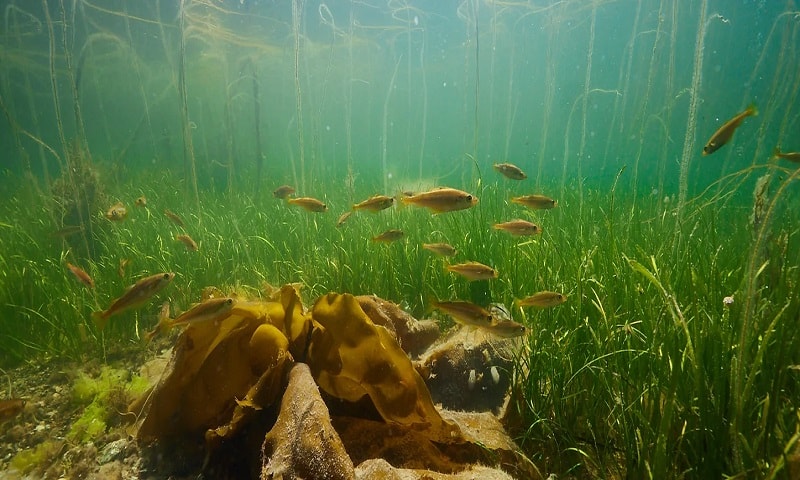
If you happen to be visiting Loch Craignish on the west coast of Scotland, you might catch sight of a group of snorkellers and wonder what on earth they are doing swimming in its cold and murky waters. They are a band of hardy volunteers handpicking tens of thousands of seagrass seeds from the loch’s bed and bringing them ashore so they can be replanted elsewhere.
Welcome to Seawilding, an innovative community-led native oyster and seagrass restoration project which aims to restore lost biodiversity, sequester carbon and create green jobs in and around the loch.
Popular with walkers, Loch Craignish is not what it used to be – years of dredging have seen to that. Today, the loch has around just five hectares of seagrass meadows when it used to have 80 hectares.
The Seawilding project’s founder, Danny Renton, says: “If you talk to people in the area who are in their 80s or 90s, they’ll tell you what was once here and isn’t anymore. That’s everything from an abundance of bird life and fish to bigger scallops and seagrass meadows. So, we as a community were looking at the loch and thinking about what we could do to address this.”

A great sequester of carbon
Seagrass is a vital part of many marine ecosystems, providing food and shelter for a wide variety of marine animals from fish to shellfish and playing a vital role in our seas by helping to maintain a healthy marine environment. Not only does seagrass sequester carbon through photosynthesis, it also buries it right down into its roots – like a peat bog – and it’s also an incredibly important fish spawning ground.
Yet a recent University College London study estimated that British waters have lost more than 90 per cent of their seagrass meadows in almost a century. The losses, resulting from the impact on coastlines and coastal waters from industry, agriculture and development, are a setback in the fight against global warming and biodiversity decline. While seagrasses cover just 0.1 per cent of the ocean floor worldwide, they can store carbon up to 40 times faster than forests can. Making up some of those losses could offset carbon emissions elsewhere while helping to increase other marine resources.
Oyster famine
Seagrass is not all that has disappeared. Oysters that were once plentiful in Scotland’s sea lochs are now scarce (they were declared extinct in the Firth of Forth in 1957). The Scottish fishing industry was said to have harvested around 30 million oysters a year in the 19th century. When there is an abundance of oysters they clean the water, create complex reefs and provide a great habitat for fish nurseries and spawning.
Progress is being made
The project wants to restore 80 hectares of seagrass meadows and reintroduce a million native oysters in the loch. And great progress is being made. More than 200,000 seagrass seeds have already been replanted and it plans to build a seagrass nursery to germinate seeds to plant seedlings in the future. Some 300,000 oysters have also been released into the loch.
How Weatherbys is playing its part
The project resonates with Weatherbys as part of our Creating The Future initiative. Subsequently, we have partnered with our client True Travel, a niche travel provider which has a foundation that raises money for sustainable charitable projects around the world, to give it our support. Together, we have marked this partnership with a starting donation of £25,000. This donation will fund the training of four divers, which will enable the team to accelerate its restoration programme and reach the goal of replanting 80 hectares of seagrass across Loch Craignish.
We are genuinely optimistic about the potential it harbours to reverse the loch’s biodiversity decline. To learn more about the project, click here.
